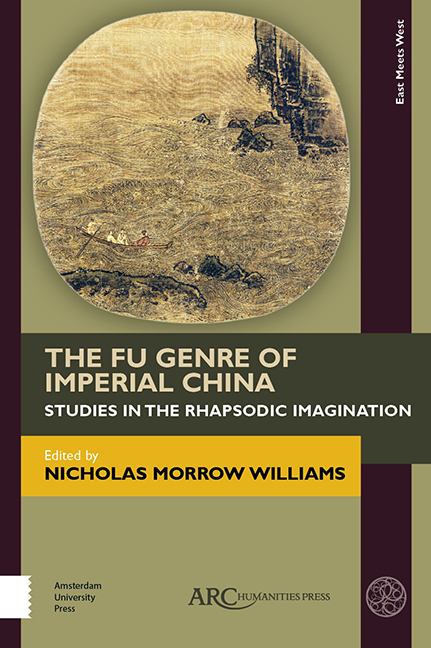7 - Argumentation and Generic Change in the Mid-Tang Fu:Li Guan’s(766– 794) “Fu on Suffering the Pitiless Rains” and the Role of the Shelun Genre
Published online by Cambridge University Press: 20 November 2020
Summary
THIS CHAPTER EXAMINES generic change in the fu of the mid-Tang, focusing on the case of Li Guan 李觀 (766– 794). Li's fu output includes certain highly innovative examples that seek to push the possibilities of the genre into new areas, often through the introduction and reinterpretation of elements from earlier literary traditions. Of particular interest is the way in which Li draws on earlier forms of argumentational writing, most notably the shelun 設論 or “hypothetical discourse” genre, to achieve an advancement of the fu genre through what I shall term “modal extension”: writing in the “frustration fu” tradition, Li succeeds in shifting away from the more egocentric lyrical mode of earlier works in favour of a far more pronounced and generalized argumentational voice that brings his fu close to other argumentational genres.
Li Guan's “Ku yu fu” 苦雨賦 (Fu on suffering the pitiless rains) provides a focal point for a cluster of issues surrounding argumentational fu writing. These include the relationship of argumentational fu to other contemporary works of philosophical argument (such as Liu Yuxi's 劉禹錫 “Tian lun” 天論 and Liu Zongyuan's 柳宗元 “Tian shuo” 天說), the place of these works in the frustration fu tradition, the role of mid-Tang argumentational fu in the formation of the wen fu 文賦 or “prose fu” of the Song dynasty, and the relationship between the fu and shelun genres. Various of these aspects have been the subject of scholarly comment: the importance of “argument” or “reasoning” (shuoli 説理) in fu of the mid-Tang, for example, is now well established, as is the role of associated prose-oriented features in the rise of the wen fu. The role of writers of the guwen movement is frequently emphasized in such studies, while Du Mu's 杜牧 (803– 852) famous “Epang gong fu” 阿房宮賦 is almost invariably cited as the pre-eminent late Tang example of the move towards more radically diffuse prosodic forms.
- Type
- Chapter
- Information
- The Fu Genre of Imperial ChinaStudies in the Rhapsodic Imagination, pp. 141 - 168Publisher: Amsterdam University PressPrint publication year: 2019



